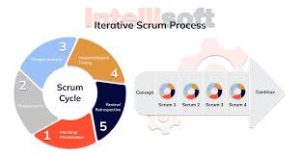How Iterative Design Can Contribute to Cost Savings in the Design Process
How Iterative Design Can
A major advantage of iterative design is that you can identify and resolve problems quickly. This prevents them from delaying the product’s release and reduces the overall cost of development. However, iterative design can also help you save money in a more indirect way by lowering the risk of costly mistakes.
A full redesign of a product takes time, which can be expensive if you have already invested a significant amount in development. Iterative design helps you save on the costs of a complete redesign by identifying serious flaws early on. If you were to wait until you had completed the entire development process to find out that your product was flawed, it could take weeks or even months to get everything back on track.

Iterative design is a method that allows you to create prototypes and test them with consumers to see how they behave. This is a great way to discover which improvements are most important to your target audience and avoid investing resources in features that may not be appreciated or used. Iterative design is a powerful tool that puts user experience at the forefront of product development.
How Iterative Design Can Contribute to Cost Savings in the Design Process
Using iterative design can be particularly beneficial when designing products for a digital environment. It can be difficult to understand how a physical object will function and interact in the digital realm, which makes iteration an essential part of the design process.
One of the most well-known examples of iterative design is Wikipedia, which is an open-source encyclopedia that relies on users to update and improve content. The fact that Wikipedia is successful shows how effective iterative design can be when creating products for the digital world.
However, it is important to note that not all iterations will lead to significant usability improvements. Some will simply fail to make any difference at all. Moreover, there is probably a point of diminishing returns, beyond which further improvements won’t yield much more benefit than the previous iteration.
In addition to testing and evaluating each iteration, you should also spend time updating stakeholders regularly about the project’s progress. This will allow you to build a strong rapport with your clients and show that you care about their feedback.
Taking a user-centric approach to your design and development process is the best way to ensure that you’re creating products that will be widely used and enjoyed. Iterative design is an invaluable tool that can help you achieve these goals, so don’t hesitate to implement it in your next design project. If you have any questions about how to implement iterative design in your company, please feel free to contact us. Our team of experts will be happy to assist you. We look forward to hearing from you!